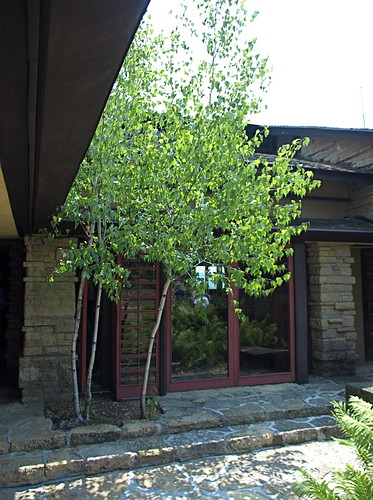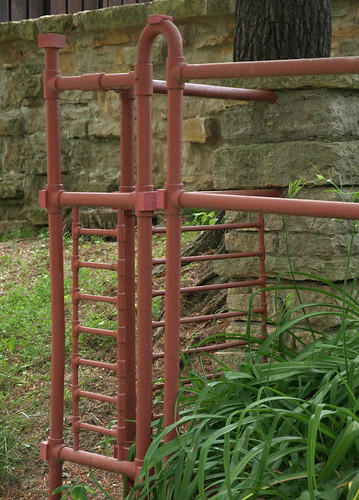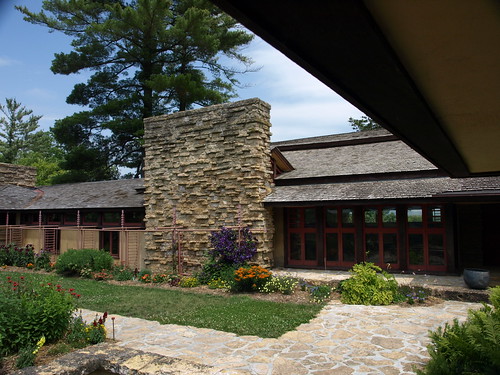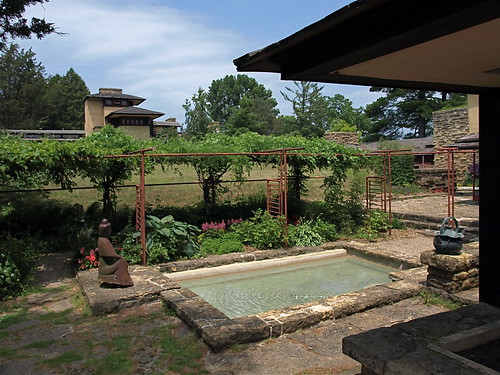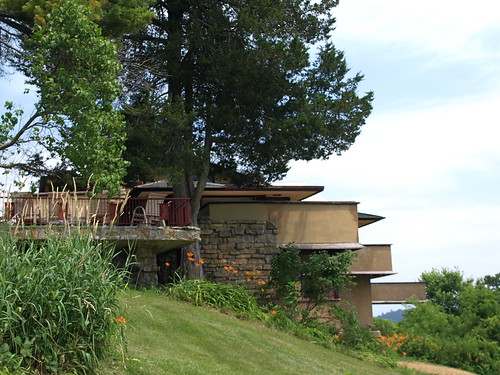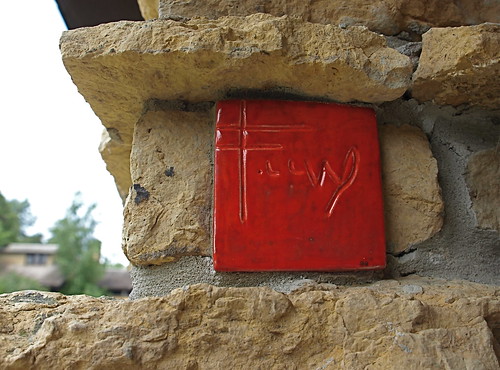Taliesin, Frank Lloyd Wright’s Home and Studio in Spring Green, Wisconsin, has several gardens also designed by Wright. (If you know much about FLW, perhaps you know that Wright designed everything connected with his homes. He was not only the architect, he also designed the furniture, rugs, and everyday house implements from dishes to lamps. And some of his clients even allowed him to design their clothing, including magnificent dresses, so that they would FIT into his vision of his perfect environment. (Susan Dana from Springfield IL was his favorite client because she agreed to any of his ideas AND funded them promptly!) Hmm. Maybe Frank was a bit of a control freak in addition to all his creativity and genius.
Anyway, Wright brought thousands of art objects and artifacts from Asia to the US, most notably from Japan, and used them throughout many of his homes, in his designs and in his gardens. These two cranes are in the garden near his bedroom in Taliesin. He could open his bedroom door which was set into a wall of framed windows, take a dip in his 8 foot deep plunge pool, and then wander a bit through his flowers and sculptures.
It really would have been an insomniac’s solution – a dip in a cool pool and then a midnight stroll in the gardens. I’d much prefer that option to the one I take nearly every night when I find myself awake, lying awake and watching the ceiling.
Do you think FLW would mind a new occupant?


